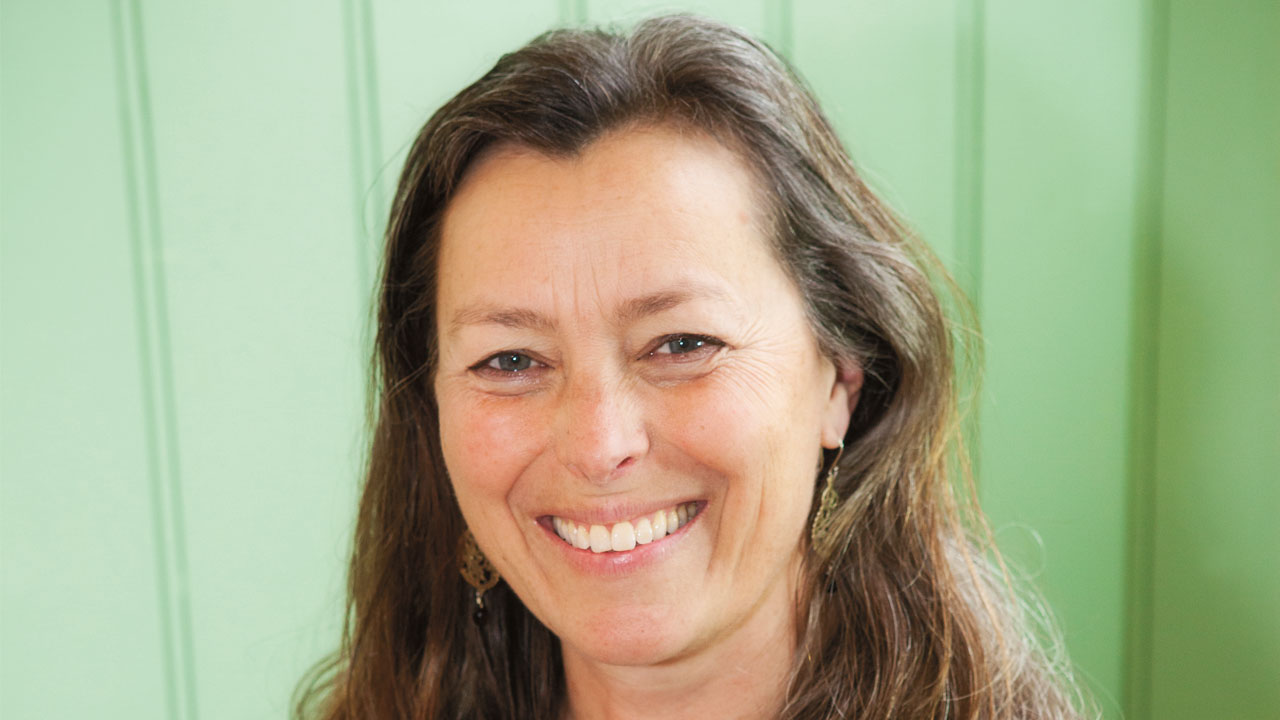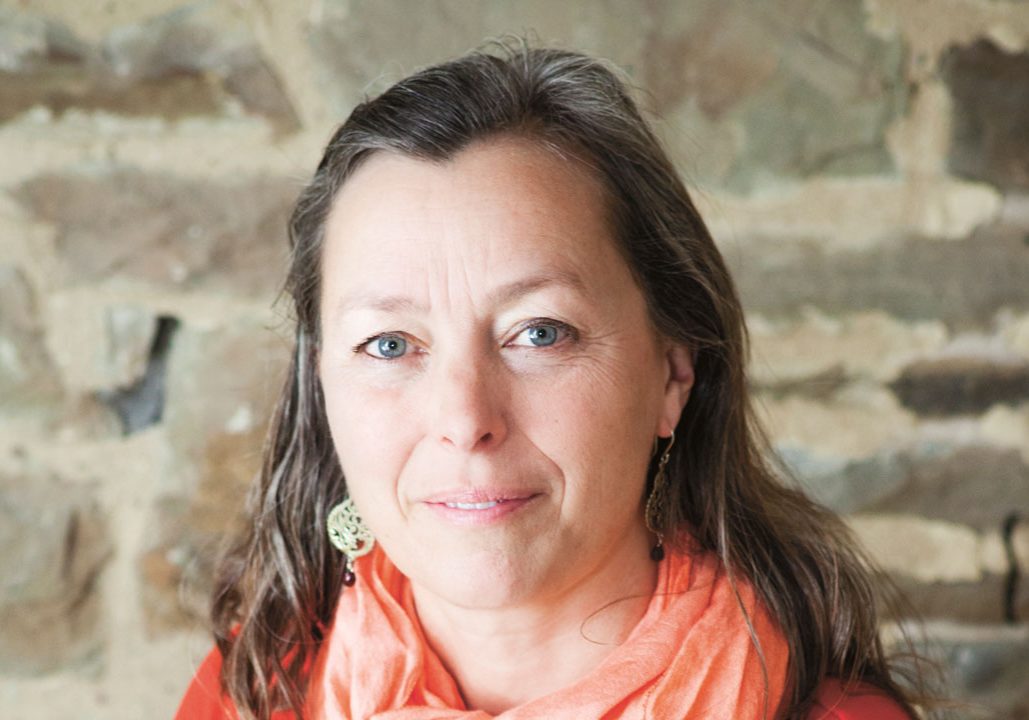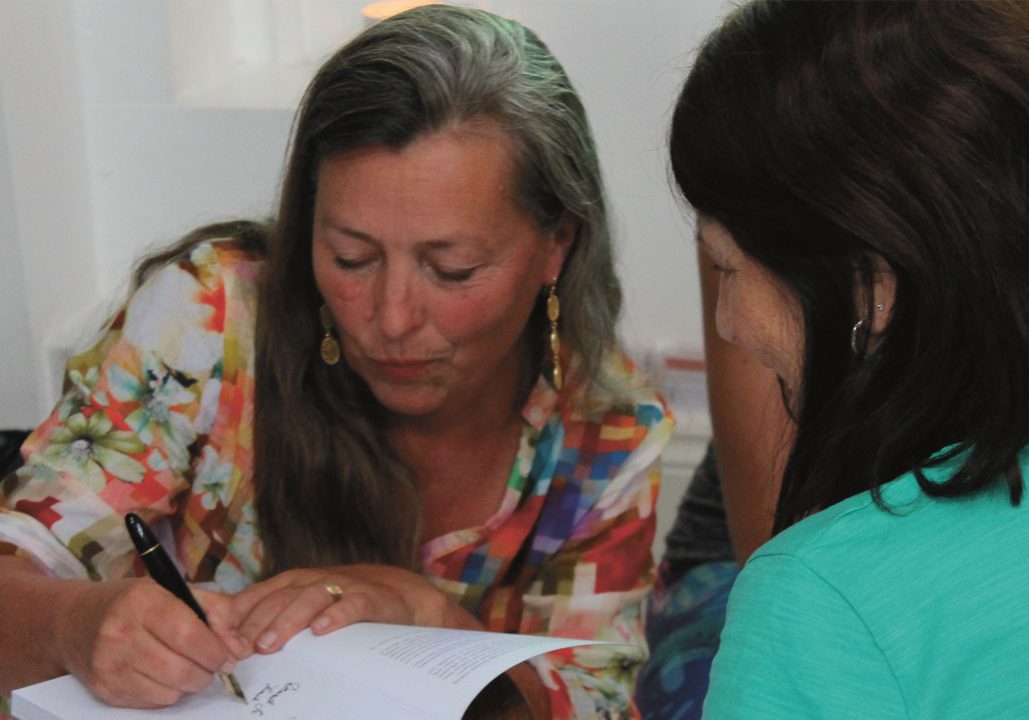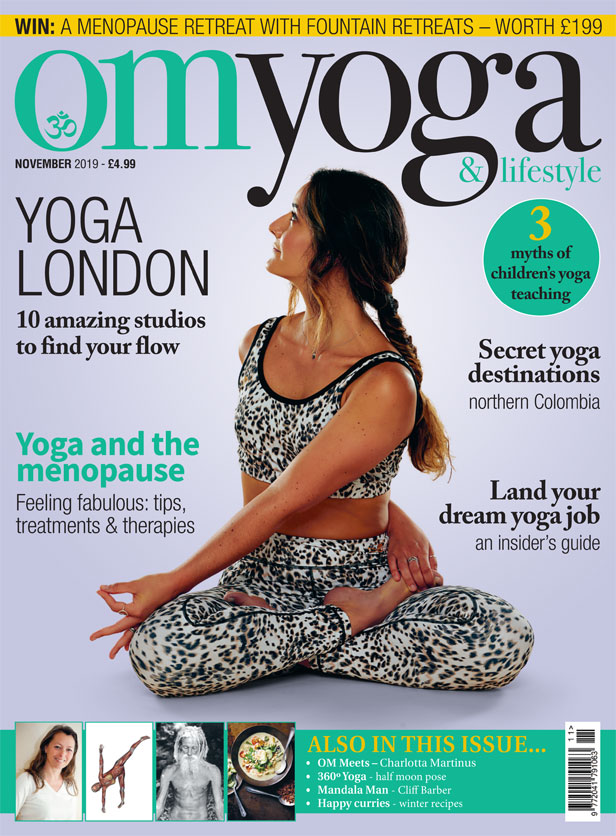
OM meets...
Charlotta Martinus
Charlotta Martinus is on a mission to introduce teenagers to the wonders of yoga. Here, the Teen Yoga founder tells OM that the need for yoga among younger people has never been more urgent.
How did you first get into yoga
While I was pregnant, my sister, who is a GP, ordered me to slow down and start taking care of myself. I was a partying BBC TV producer at the time and didn’t know how to slow down.
Who inspired you in those early days
My sister and my first teacher, Swami at the Sivananda Putney centre in 1998, who is still my teacher and also my colleague, because she embodies yoga.
What does yoga give you personally
Internal space, peace of mind; it is my compass north. Therefore, it gives me more meaningful relationships, perspective on what is important as well as respect for my physical and mental health. It is my confession, my church, my poetry, my inspiration, my rock, my solid point, my income, my flow: it allows me to feed my soul and listen and act from my soul.
Any favourite teachers
My teacher is in India, in Kerala: Swami Govindananda. I only need to be in his presence to understand yoga more deeply.
Describe your teaching style
Intuitive, strong, surprising, respectful, with a focus on how exactly the student in front of me learns and what they need, i.e. student led.
Yoga career highs so far
My only career high is when people get what yoga is: when they embody the wisdom. I love the moment when I have a group of teens in savasana and when they get up and look at me as if they have just been taken into the temple of their own soul.
But I guess having a book published was pretty amazing and also when the courses all started getting booked up over two months in advance, it made me realise that others get the importance of sharing yoga with teenagers.
It was also exciting to discuss more significant news coverage with major national newspapers and having meetings in the House of Lords and the House of Commons about bringing more yoga to young people.
The recent conversations with NHS England have been meaningful and important as well as the EU project which has had a significant impact in five countries. More importantly, the Hippocampus Project has been a significant game changer in having several highly experienced academic researchers evaluate the impact of yoga on young people, to produce the first substantial UK research base on yoga – this is essential for the government to get behind any initiatives that we would like to take forward. The research base of yoga up to now is pretty scant.

What was the original idea behind Teen Yoga
I was asked to teach yoga at a local secondary school in Somerset and I failed miserably, so realised I needed to devise a way to reach the students more effectively. I had already taught languages in schools across the UK and Sweden for many years, but found yoga a much trickier subject to teach. I realised they needed the benefits that yoga could bring but they were not accessing them, as I had taught yoga badly. So I thought there must be others in my shoes, who love yoga, love young people and want to serve them to become the best they can be through a yoga practice. I knew we needed to find a pedagogy that reached them deeply and stayed with them, and that would be important and significant for the future of our country and our planet. I realised that if young people could learn to take care of themselves and each other with respect and delight, then we could change the trajectory of the planet and build an optimistic and wise society.
What are the main issues facing teenagers today
Constant, epidemic, organic stress. Schools are hothouses of stress; teachers attempt to motivate students through goal-orientated methodology, creating constant stress from primary school upwards. The teachers themselves seldom have any healthy stressbusting techniques in place but simply hand on their own undigested chronic stress to the students. The online world is constantly beckoning anyone over nine years old, with the buzz in the pocket becoming an intrinsic part of their daily rhythm. Silence and solitude hardly exist for anyone. This impacts focus, concentration, resilience, physical and brain development. It also deeply affects relationships between people, which become transactional and shallow as a result of the easier and more immediate gratification of the online world. There is lots more to say about this, but basically, most mental health issues in any human start before the age of 17 years old and many mental health issues are caused by lack of solitude, reflection, deep connection and attachment, all of which come with yoga.
Simple tips for teens to bring yoga into their lives
The Mood cards and the Yuva Yoga app were developed in answer to this question. A few simple exercises at home or in an open space for a few minutes daily can make the world of difference in your resilience to stress and other peoples’ opinions of you.
But first of all, become aware of the breath, then breathe deeper, extending the outbreath as much as you can as often as you can, basically sighing. Then, to scare your parents and little siblings, you can start using Darth Vader breath (Ujjayi) which will make you invincible to others. Then you become aware of where you hold tension in your body and release it by stretching those bits.
If you are tired but cannot sleep, then you can lie with your legs up the wall for a few minutes and close your eyes and listen to some calming music.

Advice for yoga teachers trying to entice teens to embrace yoga
Figure out what they need and what they are interested in and start from there. Don’t have your own agenda. Let them lead the way. Always signpost to other sources so that they can find their own way.
What are your plans for Teen Yoga going forward
We would like to extend our reach by extending our online service and training up some specifically chosen close allies to share the course in further flung places. There will be another, more practical book published in the coming years as well and we will build on the app so that it can become a really useful tool for young people everywhere.
What do you do when you’re not doing yoga
I love to read, ride, sail and sing. But I’d say 75% of the time I am actively choosing to do yoga, whether it is on retreat, meditation, asana or teaching.
Anything else
We are at a point right now that is completely mature for yoga; many have rejected religion and with it they have lost a spiritual compass. Many feel lost and empty but churches and temples are too restrictive. Yoga offers an experience of the sacred within one’s own body. The time for yoga is now.


